Monday, December 7, 2009
Lauren N's Group Projects
Here are some tips to make your next group project successful.
· Communicate – Everyone has a different schedule and different mindset. Understanding this will make everyone’s job a lot easier.
· Stay positive – No one works well under constant negative conditions. I’m all for constructive criticism but a hint of encouragement never hurt anyone.
· Set deadlines – If everyone is finishing their part on a set deadline, less stress is established which makes working conditions much comfortable.
Below is a video explaining some guidelines on how to be a great group member.
http://www.iamnext.com/academics/grouproject.html
Follow the Leader
Respect- It is crucial that you earn the respect of the members in your group. If you are not respectful to your group mates they will not give you respect. If you do not have the respect of your group then they will not want to work or help you get tasks accomplished.
Confidence- If you plan on being a leader you will need to have confidence in what you are doing and gain the trust of your group. I know that if my group leader was not confident in what they were doing then I would not put in my best effort. However, if you know that your leader is leading the group in the right direction then you will try harder to help achieve your tasks.
Positive Energy- I recently read an article about arguably one of the greatest CEO's of all time, Jack Welch. "Leaders get into everyone's skin, exuding positive energy and optimism." Jack Welch is trying to say that leaders must be honest with their workers and guide them in the right direction. If this is done correctly than you will get the most out of your workers.
References:
http://ezinearticles.com/?Seven-Personal-Characteristics-Of-A-Good-Leader&id=59305
http://edbrenegar.typepad.com/leading_questions/2005/04/jack_welch_how_.html
C Brady's Writing Business Letters
Spellling and Grammer Misteaks
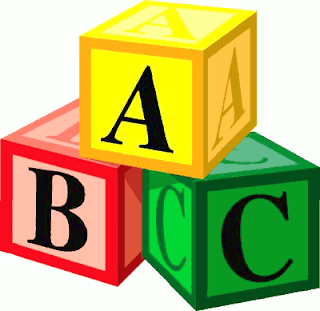
>
Well my spell check isn't going to like this post but it will be fun, how many spelling and/or grammar mistakes can you find?
Many ears ago, befor modern educashun in the new millenium, one problem in skools was baseic speeling and grammer. To conbat this and rays acheivement, teechers were adviced to start at the very begining, at the yungest age. Ones they had managed to breath new life into leessons, progres came quicklie- sucess was then garanteed. How many speeling errors would modern skolars identify in this paragraph?
http://www.qna.rediff.com/questions-and-answers/
Now as you can see by these exaggerated mistakes, the idea still gets across however it makes the writer look very uneducated and does not set a good image for him. Good grammar and spelling is not only about getting your ideas to people but it is also a way to show that you are well educated and a credible person. And in the business world credibility is a very important attribute, because if people don't believe and trust you then you are not going to make it very far.
Conflict Resolution in the Workplace
deKrizia L's Writing a Presentation
Creating a presentation is very similar to writing a business document. No matter what we're writing we need to be prepared, acknowledge the use of visuals and have a goal for the report or the document being written.
Some people seem to be born great presenters, it seems they can talk about anything and not get nervous and they can make anything sound wonderful. I was never one of those people! In fact, I would get so nervous before presenting that I honestly didn't enjoy doing it. But after presenting so many times I have realized the tips mentioned in the video really help me stay calm which really sets the stage for a better presentation and gives me confidence that carries over to the next presentation.
The video talks about being prepared by writing the speech on paper or note cards. Remember that note cards are there to spark your memory about what to say next, they are not meant to have whole sentences that you're reading directly from because that takes the professionalism out of the presentation. Another part of being prepared means going over the presentation before you acutally present it so that you know exactly what to say and when to say it and you can catch any errors before it's too late.
The use of visuals can really make or break a presentation. It's so important to keep the audience involved. Giving them something to look at during the presentation can help them make connections to what you're saying in the presentations.
Another important part of a presentation is the goal. We should really set goals in most things we do whether it's writing a blog, business report or creating a presentation; these things are all done for a reason and it's important that we sit down and know what the reason is and what we want to accomplish by creating these documents.
Video from: http://www.youtube.com/watch?v=ct7dk5GLGsw
Monday, November 30, 2009
Basic Letter Elements
Body: The body of a letter is nothing more than elaboration on your introductory ideas, you want to give the person the details of your proposal or idea that you told them about in your intro. Use the body of the letter to fully explain the purpose of writing them.
Conclusion: Finally the conclusion should include a brief summary of what you have just talked about in the body of the letter, one final idea that really leaves the reader thinking that way they don't forget you. And then lastly you want to close your letter with a sincere closing remark such as; Sincerely yours, or your friend.
Chelsea B's Drafting Your Document Correctly
In the workplace there are higher standards to which we are all held and must strive for. There is a professionalism that requires we put more effort into our documents than merely one draft and then, boom, you’re done. Drafting is the nonlinear process that allows us to create the first version of our work with majority, if not all of its parts. When writing a draft it is key we include the following:
*All parts of document- front matter, body, and end matter
*A strong statement of purpose
*Logical, Concise support
*Strong Conclusions
The first line of attack would be to draft the body, the primary part of the document. There is no particular length to strive for as much clear, concise coverage of the information you need. Clear topic sentences are a must as well as noted focal points of each section.
Next, it’s good to write up the conclusion. Here you include a summary of the information, analytic predictions, recommendations for the reader, and a personal judgment.
The Intro is the last part to write and definitely most important, this is what reader’s remember most. Here you should include:
*Purpose/Objective
*Scope
*Statement of Problem
*Relevant Info/Background
*Key Terms
*Overview of Organization
*Summary
I know it may seem like a lot to accomplish, but don’t worry, it’s only the first draft!
deKrizia L's Rhetorical Awareness in the Workplace
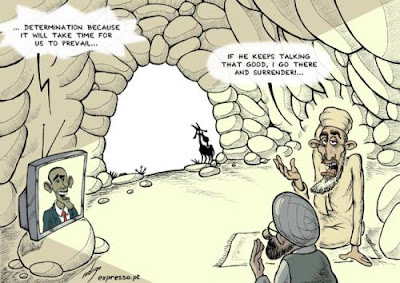 Aristotle once defined rhetoric as, "the available means of persuasion in any given situation" (http://www.prenhall.com/). Many of us are being persuasive, even when we're not meaning to be. For example, when I write a resume and fax it to a company, I'm doing it with the persuasive goal of getting an interview with that company. Rhetorical problems in the workplace usually involve difficulties in the construction of persuasive text or documents, and many of us face these problems on a regular basis. Rhetorical awareness can help us get through these issues and create an outstanding document. To have rhetorical awareness we must first understand that workplace writing is persuasive and then we must consider the rhetorical situation, which includes defining the purpose, audience, stakeholders and context of the document being created.
Aristotle once defined rhetoric as, "the available means of persuasion in any given situation" (http://www.prenhall.com/). Many of us are being persuasive, even when we're not meaning to be. For example, when I write a resume and fax it to a company, I'm doing it with the persuasive goal of getting an interview with that company. Rhetorical problems in the workplace usually involve difficulties in the construction of persuasive text or documents, and many of us face these problems on a regular basis. Rhetorical awareness can help us get through these issues and create an outstanding document. To have rhetorical awareness we must first understand that workplace writing is persuasive and then we must consider the rhetorical situation, which includes defining the purpose, audience, stakeholders and context of the document being created.Another element that should always be thought about is the addition of a visual element. Visual rhetoric leads us through a list of questions to ask ourselves when creating a work document. These questions include:
- Should I use a visual?
- What kind of visual should I use?
- What should the visual look like?
- Where should the visual be placed on the document?
- How should visual and written elements relate to one another?
- How should the document look?
- What form should the document take? - for example should it be a print document or an electronic document?
Visuals such as graphs, images or icons can persuade the thoughts of others as long as they relate to the document. After going through these questions we can make a better decision about the end look of the document and whether it's necessary to add the visual. I hope this helps you create your next work document. Just remember to always think rhetorically!
Source: http://owl.english.purdue.edu/owl/resource/624/01/
Technical Communication Textbook
Ryan K's Editing, Revising, and Rewriting
Editing
Editing is used to make sure your document is correct in areas such as:
*grammar
*spelling
*punctuation
*sentence structure
Editing is extremely important because if your document has simple grammatical or spelling errors you will lose credibility with your audience and your work will lose its value.
Tips for Editing
*If you have to edit your own work read it backwards. This will help to recognize errors. A problem with editing your own work is often times you will overlook errors.(Dorbin)
*Read your work out loud.This will help you recognize when sentences don't sound right
*The best method for editing is to have someone else edit your work. When my work is edited by someone else they often times find errors that I overlooked.
Revising
Editing is used to correct mechanics but revising on the other hand is used to improve the content of your writing. Revisions are much more in depth than edits because they improve content, organization, and design.
Tips for Revising
*Make sure that the document achieves its purpose
*Eliminate irrelevant or repeated information
*Be sure to use the correct style for the situation
Rewriting
Rewriting a document requires even more changes than a revision. Rewriting is necessary when a document is going to be used for different audiences and purposes. Although rewriting can be tedious, it is necessary in order to effectively "meet the demands of a different rhetorical situation." ( Dorbin)
Tips for Rewriting
*Include new content that will help achieve the purpose
*Be sure to write to your new audience
References
"Revising." ABC's of the Writing Process. Web. 30 Nov. 2009.http://www.angelfire.com/wi/writingprocess/revising.html
Dorbin, Sidney, Christopher Keller, and Christian Weisser. Technical Communication in the Twenty-First Century. second. Columbus: Prentice Hall, 2008. 273-289. Print.
Lauren N's Business Letter Examples
Sample Business Letter
Mrs. Clara Winters --------Return Address
12187 S. Polo Dr.
Fairfax, VA 22030
May 26, 1998 -------- Date
The Tiny Tots Toy Company -------- Inside Address
15456 Pyramid Way
College Park, FL 33133
Dear Customer Service Representative: -------- Salutation
I recently purchased one of your Tiny Tents (Model # 47485) for my three-year old. Unfortunately, afterviewing the components that came with the product, I discovered that four of the parts were missing. Also, the instructions that came with the tent are incomplete. Both of these situations have resulted in the tent remaining unassembled and unacceptable as a toy for my daughter.
I am writing to request replacements for the missing parts, and a copy of the full set of assembly directions for the model I purchased. If reasonable arrangements are not made within ten business days, I will return the tent to the store I purchased it from and expect a full refund. To assist you in processing my request, I am including a copy of my sales receipt and a list of the missing parts.
I have purchased other toys manufactured by your company in the past, and have always been impressed with the quality and selection Tiny Tots has made available to its customers. I sincerely hope this is a one-time incident, and that any future purchases I make will live up to the standard my family has come to expect from your company.
Sincerely,-------- Closing
Signature
Clara Winters -------- Typed Name and Position
Enclosures: 2 -------- Abbreviations
(http://www.gmu.edu/departments/writingcenter/letter.html)
Sunday, November 29, 2009
Frankie G's Periodic Elements of Email
Monday, November 23, 2009
Chelsea B's Progress Reports
A progress report is an informal update on the status of an ongoing project. Most useful for managers and supervisors, they detail how far along they’ve come on a project and how much farther they have to go. Typically there are set goals and objectives and the report gives insight as to which stage of completion they are in. They cover information such as completed objectives, objectives which encountered delays, and solutions to the problems that caused the setback. A standard progress report would review past information, explain current affairs, and provide the audience with expected dates of completion. Also, it would let an audience know when a final, more formal report is expected. Honesty is crucial in constructing a progress report because its audience, mainly stakeholders, may have other projects going on at the same time and need to plan accordingly. Length does not matter as much as a thorough and accurate report.
P.S. The code did not post despite numerous attempts. I'm sorry but here is the text.
Reference Letters
Jessica J’s Writing Right
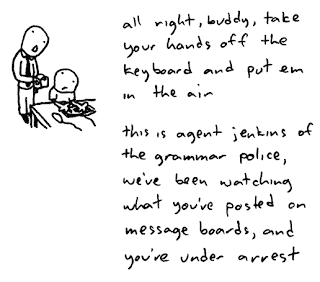
Writing infiltrates nearly every aspect of our lives, so why wouldn’t we make the effort to ensure that our writing is proper? Any reader that spots a glaring mistake is almost certain to give less value to whatever he or she is reading. Here are some common mistakes to watch out for, so that you can always write right!
1. Using the wrong version of a word: There, their, and they’re may be homonyms, but that doesn’t make them the same word. Take the time to ensure that you are using the appropriate word for what you are writing. Yes, this applies to your/you’re, its/it’s, principle/principal, affect/effect, too/to/two, and many others.
2. Using incorrect punctuation: Yes, the rules of punctuation are often confusing, but if you are going to put the effort into composing something, why not do it correctly? Pay attention to commas, apostrophes, and even semicolons.
3. Refer to yourself correctly: Misuse of “I” and “me” are a pet peeve of many readers. Some writers will use “I” in order to sound more sophisticated; however, using “I” when you should use me just makes the writer look unintelligent. If you can’t figure out which to use in a complex sentence, a great technique is to break it down into a simple statement. Susie and ___ went to the store. Consider: I went to the store.
4. Use abbreviations appropriately: Abbreviations can be very helpful in condensing writing, but incorrect abbreviations are just confusing. Misuse of e.g. and i.e. is very common. Remember, e.g. means “for example” while i.e. means “in other words.” Also, an abundance of abbreviations can leave readers confused.
5. Text writing is not writing: Text shorthand has certainly had an impact on language in the past few years, but this does not mean that it is appropriate to include in serious writing. Use proper words, or ppl will b :( 2 read ur work.
Of course, there are many other aspects of writing that you must keep in mind, but avoiding these mistakes will certainly contribute to better writing. Also, if you are ever in doubt about something that you are writing, ask for a second opinion. The people around you are a wealth of information, learn from them!
Sources:
"Do You Make These 7 Mistakes When You Write?: Copyblogger." Copywriting Tips for Online Marketing Success From Copyblogger | Copyblogger. Web. 24 Nov. 2009. http://www.copyblogger.com/grammar-writing-mistakes/
"Five Grammatical Errors that Make You Look Dumb: Copyblogger." Copywriting Tips for Online Marketing Success From Copyblogger | Copyblogger. Web. 24 Nov. 2009. http://www.copyblogger.com/5-common-mistakes-that-make-you-look-dumb/
"Ten Common Writing Mistakes Your Spell Checker Won’t Find." Writing English. Web. 23 Nov. 2009. http://writingenglish.wordpress.com/2006/09/18/ten-common-writing-mistakes-your-spell-checker-won%E2%80%99t-find/
"Top Ten Common Writing Mistakes." Index. Web. 24 Nov. 2009. http://www.jjuriaan.com/Top_Ten_Common_Writing_Mistakes.htm
"Ubersearch." Sharing Machine. Web. 23 Nov. 2009. http://www.sharingmachine.com/ubersearch/ubersearch.php?search=grammar&searchtype[]=content&searchtype[]=link&searchsite[]=TFD
Lauren N's Communication in the Workplace
Communication in the 21st century is quickly evolving into one that involves less conversation, and more electronic sharing of information. While in the past, an employee might have a discussion with a co-worker face-to-face, today people tend to communicate via email or instant message. Either way, the old rules still apply regarding how to effectively communicate in the workplace.
1. One of the most important components for successful interpersonal communication is clarity. People need to be able to understand what you are saying.
2. Another component for successfully workplace communication is to be direct. Learn to make your point quickly. When talking to a co-worker, get to the point quickly, and be direct.
3. Many times in business, people forget common courtesy and tact. In speaking with co-workers, be considerate of their time and points of view. Separate emotion from intellect, and do not be condescending.
Below is a video explaining the do's and dont's of effective communicating. Although, it may be a bit corny, it has some good tips.
Ryan K's Recommendation Reports
Recommendation Reports
Recommendation reports are arguably one of the most important types of formal reports. They are used by companies and organizations to help make important decisions in many different areas such as: which product to choose, which method would work best, or how to increase profit. Since your boss may someday put their trust in your recommendations it is important to know how to write a recommendation report that will help your organization make the best decision. The tips listed below will provide you with information on what to include in a recommendation report.
What to Include
Introduction- In the introduction you will want to discuss the purpose of the report and discuss the contents of the report.
Background Information- The readers of your report may not be familiar with some of the technical terms regarding the situation at hand. Therefore, you will need to include a section that explains the necessary technical terms to your readers. It is acceptable to include this information in a separate section or in the section that the terms are introduced.
The Requirements That Will Be Used- A critical part of any recommendation report is a section on what requirements you will be evaluating the possible options on. Requirements can be numerical, yes/no, or based on a rating scale. To support your final recommendation it is beneficial to include a discussion on what requirements are the most important.
Compare and Contrast- In this section you will compare and contrast the possible choices. This is the section where you will base your recommendations from. Readers will also refer to this section to draw their own conclusions based off of your research. It is important to include all of the positive and negative aspects of each option and compare them against the requirements you set.
Conclusion and Final Recommendation- The conclusion restates your findings that you have discussed in the previous sections. Your final recommendation should be based off of your research and be clearly stated. This section should also include why you made the recommendations you did and why they are the best option. If you are assessing a complicated matter it is not uncommon to provide more than one recommendation.
References
Online Technical Writing. Web. 23 Nov 2009.
deKrizia L's Writing Memos

In the business world it's critical to know how to communicate to those around us. I have always been someone who would rather tell you something face to face or over the phone; however in the fast pace world of business other forms of communication may be necessary to get the piont across or get the problem solved. There are so many ways to communicate in the workpalce. You can still make a phone call, but other options such as writing memos, reports, letters, or emails are available and necessary to ensure good communicaiton. In the workplace, it's important to know how to write all of these documents and today we are going to focus on writing a memo.
Monday, November 16, 2009
deKrizia L's Resume's: The Little White Lies
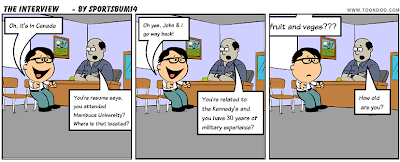
As mentioned in an earlier blog post, having a professional resume is essential. My resume is my chance to sell my work ethic, interests and desire in order to get the ever so important interview. With so much relying on the resume some of us may be tempted to lie or maybe to "stretch the truth", but it's crucial that when those thoughts come up we firmly push them away. Lying to an employer can be a big mistake. There is a fine line between selling and lying on resumes. We do want to use positive adjectives and express our desire and experience related to the job, but we don't want to claim degrees we don't have, job responsibilities we never had or even exaggerating titles of jobs we've had in the past.
There are many reasons why we shouldn't lie on a resume; probably the most obvious reason being that it's immoral. But something else we need to consider is the possibility of being caught and the consequences that will follow. Is it worth it to lie in order to get the job and then get caught and being fired? And for those who think it won't happen, we can look back just a few years ago when George O'Leary was fired in 2001 after only five days on the job as Notre Dam's football coach because he lied on his resume about a master's degree he never earned and an exaggerated position on a previous football team. If we look, we can find many stories like this happening all the time.
In this economy lying can be tempting, but in the end it's best to tell the truth. Most of us don't have a perfect career history or the best experience for every job, so don't feel like that is the only way to get noticed. Be confident in yourself and your skills and it will show. It's up to you to create a honest resume, and I hope this helped you do so!
Information from: http://theladders.com/career-advice/lying-resume-how-far-stretch-truth
ToonDoo should say, "I'm 28", but for some reason it says fruits and veggies. Sorry about that!
Good Interview Questions
Some sample interview questions are as follows:
1. What are the responsibilities of the position? - Most important question by far, you want to know what you will be doing if you get the job.
2. Is there room for advancement into management? - Advancing in the company may be important to some people who wish to further their career.
3. What is the pay/salary? - Money is a very important aspect of a job and may influence on whether or not you want to take the job if its offered to you.
4. What kind of conditions will I be working in? - You need to know whether you are working at a desk inside or outside in the weather.
5. How soon can I start? - This shows the employer that you are ready and eager to start the new job.
Also questions you DO NOT want ask may include:
1. Did I get the job? - You do not want to be impatient the employer will let you know whether or not you get the job.
2. When am I Eligible for vacation/sick time? - This is something that can be discussed after you get the job, plus if you ask during the interview you may look as if your already looking for time off.
3. What does the company do? - You should already know a little bit about the company you are interviewing for, it will show that you have taken the initiative to do a little research.
4. Can I change my schedule around? - This too is another aspect of the job that you can negotiate after you have become employed.
These are only a handful of questions that you could possibly ask your employer, make sure before you go to an interview to take some time and write down a few questions for your potential employer. Not only will this help you answer questions that you may have about the job, but it will also show the employer that you are genuinely interested in becoming an employee for the company.
Chelsea B's Making a Good First Impression
- Be on time
- Be courteous to and conscientious of others
- Be open and confident
- Have a genuine smile and positive attitude
- Relax but present self appropriately
Jessica J’s Fighting Resume Fears
The dire warning has been given by nearly every professor, career advisor, and parent in the modern world - “A resume can make or break your career!” With the fear of ruining your entire future hampering the resume writing process, it is no wonder that many people, especially young people, are at a loss when it comes to preparing an effective resume. Writing a resume is certainly a process that requires a bit of a time commitment, some deep thought, and often, the help of a professional; however, it is very achievable. These tips will help in fighting the resume demons and creating an effective resume.
resume demons and creating an effective resume.
1. Proofread- NEVER send out a resume with any typos. Just don’t do it! Typos, spelling mistakes and more can easily be eliminated by reviewing your own resume or asking someone else to take a look at it. A typo is a very easy way to make a very poor impression. Why would anyone hire someone that isn’t thorough enough to proofread their resume?
2. Always be truthful- lying on a resume is not only ineffective, it is also considered unethical. Many employers follow up on claims made in a resume, and you will not be hired if an employer finds a lie in your resume. Employers want trustworthy employees.
3. Create a resume that is the appropriate length- a resume is an introduction to an applicant that highlights important characteristics; it is NOT a life story. A potential employer may read hundreds of resumes, and is almost certain to not spend the time reading a very lengthy resume. If you are just getting your first job, a one page resume is probably long enough. As you gain more experience, two pages will be acceptable, but brevity is still important.
4. Use appropriate formatting- while it might seem that excessive color, graphics, and formatting on your resume will show your style, it is more likely to distract the reader and seem unprofessional. Limit yourself to black type in a standard font of size 10-12 pt. It is great to use bolding or italics to draw attention to certain areas, but be sure to use them sparingly. Don’t be afraid to leave some white space, as it will keep your resume from looking overwhelming.
5. Adapt your resume to the position- Yes! You will need to adjust your resume for each job that you are applying for. If you choose to include an objective, you will obviously want this to fit the job you are looking to be offered. Also, you will want to include experiences and associations that are relevant to the job at hand. For example, 5 years of serving experience will be important to include on a resume seeking a restaurant management position, but may not be as important as emphasizing computer skills on a resume for a secretarial position.
6. Wording- make sure to use action verbs and quantifiable figures when describing experiences. Phrases like “generated an additional $1,000,000 in sales for the firm through creation of a new marketing campaign” will sound better than “worked on marketing to increase sales.” Remember to try not to repeat words, and make sure you are writing in the appropriate tense.
Remember that all resumes are different, and everyone will need to adapt their resume to suit their purposes. These resume tips will help in the creation of an effective resume, but are only some of the many aspects that should be considered when writing a resume. Be sure to take your time and ask for help if you need it—after all, a resume is something well worth the effort!
Sources:
"CareerPerfect." CareerPerfect. Web. 17 Nov. 2009.
Effective Resume - Top 10 Checklist For An Effective Resume. Web. 17 Nov. 2009.
Flick, Allison. "Resume Cohort Meeting." Honors Resume Cohort Meeting. Florida Gulf Coast University, Fort Myers, FL. 8 Sept. 2009. Speech.
"Tips for Effective Resumes." University of Minnesota. Web. 17 Nov. 2009.
"Ubersearch." Sharing Machine. Web. 16 Nov. 2009.
deKrizia L's Reducing Conflict in the Workplace
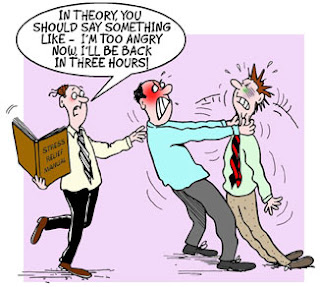
Conflict in the workplace as well as our daily lives is very common. The conflict itself can help us identify necessary changes to resolve the conflict. Unfortunately many of us become complacent; not willing to step out of our comfort zone and make the changes necessary to solve the problem. Many of us would rather leave the conflict alone, to "solve itself". Unresolved conflict can surface feelings of hopelessness, defeat, dissatisfaction as well as many other negative emotions. Once ill will has surfaced, a slight disagreement can quickly become a full-blown feud, or by addressing the situation with these practical and easy tips you can turn anger and hostility into positive feelings, creating a more productive environment.
Identify the Problem
Identify a clear and specific problem. Make sure everyone involved agrees there is a problem and knows exactly what the problem is.
Identify a mediator
When solving conflicts it's important to involve a neutral third party. This helps ensure both sides are fair and sensible in solving the issue.
Allow everyone involved to state his/her opinions about the problem
Everyone deserves the opportunity to express their opinion and in the workplace differing opinions should be encouraged. It's the job of the mediator to make sure everyone involved feels safe and supported.
Identify the ideal end result
This is important because most of the time the seperate goals turn out to be extremely similar
Figure out what can realistically be done to achieve each individual's goals and develope a compromise
It's important to take action and realize how it will affect future projects; if it doesn't work, what's the worst that could happpen? If no one agrees on any aspect of the problem, try to work backwards by identifying a long-term goal that everyone agrees with.
http://allbusiness.com/human-resources/workforce-management-conflict-resolution/12260-1.html
Image From: http://sreejith.net/category/hmm/page/2
Ryan K's Pros and Cons of Written and Verbal Reports

Reports
There are many different styles of reports including formal and informal. No matter what type of report you are doing there are pros and cons to each. With the pros and cons listed for each below, you will be able to decide whether a written or verbal report is best for your situation.
Written Reports
Pros
* Written reports have an advantage over verbal reports because they can be revised and edited until they achieve their purpose.
*Written reports provide a record that can be viewed in the future.
*Recipients of the report have longer to interpret what is being said and provide feedback.
*Written reports are more appropriate for business than face to face meetings.
*The chance of the message being understood is less since written reports provide more details.
Cons
*Audiences are not able to see your emotions or provide you with instant feedback.
*Due to the details included and revision process written reports can often take a long time to compose
*Recipients of written reports may not always read them or may skim over important details.
Verbal Reports
Pros
*Verbal reports allow the audience to ask questions and provide immediate feedback to the speaker.
*Speakers are able to adapt their verbal report to many different audiences with little effort. A written report to different audiences often takes many revisions.
*Verbal reports engage the audience more than written reports. Speakers will often times include visuals and graphics to make their reports more interactive.
Cons
*There is no written record of the report and audience members can not review important details.
*Body language may cause the audience to misinterpret what you are trying to say.
*Verbal reports are much more stressful to present than written reports. Public speaking is a major fear for many people.
References
1.http://www.referenceforbusiness.com/small/Sm-Z/Written-Communication.html
2.http://communicatebetter.blogspot.com/2008/11/advatages-and-disadvantages-of-written.html
